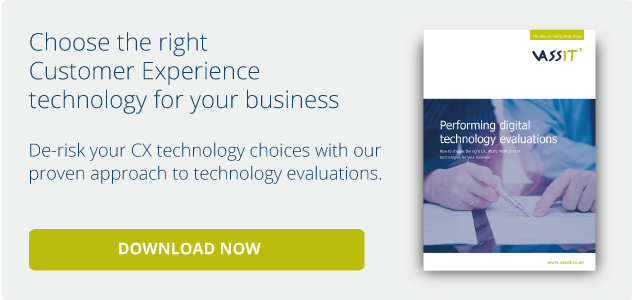By now, everyone should understand that social media, cloud, mobile, Big Data and the Internet of Things are the disruptive forces that drive digital transformation. Businesses should also be aware that their choices are limited – either embrace the disruption or be disrupted. It is not a matter of if, but when, and it is much better to be ahead of the game than playing catch up.
NEW DIGITAL ROLES AND PRIORITIES
New roles such as “Head of Digital”, “Chief Digital Officer” and similar are now common. These roles encompass of a wide range of activities, from figuring out new business models to exploring new technologies, such as virtual reality and artificial intelligence.
There is often a risk of such roles becoming detached from delivering the tangible benefits linked to business KPIs. When the desired outcome is not just a nice-looking PowerPoint document but real progress, we see there is a laser focus on digital channels. This covers a range of components – from customer experience to personalisation and cross-channel customer journey optimisation – spread across the Marketing, Sales and Customer Service teams.
THE FIRST MILESTONE
Instead of trying to boil the ocean with a massive transformation programme, tackle things one milestone at a time, with the first step being the provision of self-service systems. By allowing customers to autonomously perform tasks digitally, you give them the freedom to do so at their preferred time, from their most convenient location and using their preferred device – all without unnecessary waiting. This has tangible benefits, from direct cost savings for deflecting users away from expensive channels to improving customer satisfaction and loyalty.
Despite these benefits, a surprising number of organisation are a great distance from achieving this first step. For many tasks, UK consumers still need to wait on the phone, fill in paperwork or visit a store.
REALITY CHECK
The transformation is happening now. Phone transactions by contact centres decreased by 12% in 2015, while traffic increased across digital channels. Although this is positive, it's still not enough. Even call centres acknowledge this, with 40% admitting their systems for digital channels are inadequate for the current needs of the industry.
Mobile operators are common culprits. In many cases, even if a SIM card can be sent to your home, you are still required to visit the store to get everything up and running. Another example is the typical bank onboarding process. Even if you apply online, top UK banks still require you to visit the bank in person and spend a good portion of your day in-branch. Challenger banks are often the exception, as they have digital processes that allow you to do everything online in under 2 minutes.
The most frustrating moments come, however, when you are on the phone and an on-hold message suggests you use the web or an app instead of calling... while you are calling! It's important that you learn from the mistakes of others to provide a better customer experience.
THE OBSTACLES
What is holding back organisations despite their big investments in digital?
Many researchers found that culture and leadership are the biggest obstacles to digital transformation. For some, the solution has been a bi-modal IT approach – combining traditional and predictable way of working with an agile and exploratory one.
However, from a technology perspective, there are the following challenges:
- Ensuring you have the right technology for the right job.
This is often limited by previous big investments on certain technologies that are now becoming obsolete or stretched to perform at the pace of your business. The needs from procurement to consolidate technology vendors, and certain architectural decisions, might also be the underlining problem. Best-of-breed and Gartner Magic Quadrant are no longer the way to make decisions that are specific to your organisational needs.
- Lack of skills and agile system integration
Despite a possible perception that there is an abundance of skills around digital technologies, there is actually a real shortage of the specialised expertise required to conduct successful projects. Furthermore, the traditional way to integrate systems is no longer sufficient to deal with a complex and ever-changing digital ecosystem.
- Inability to deliver at the “speed of business”
Even if organisations have focused on the right business priorities and leveraged the right technologies to develop digital capabilities, if the production testing process is predominately manual it can cause delays, outages and even security issues. This is where DevOps comes in. A successful DevOps system can accelerate the time-to-market, helping you improve your competitive advantage in today's fact-paced digital environment.
At VASSIT we focus on helping you overcome these obstacles to make your digital transformation a reality – starting with getting the basics right first.



